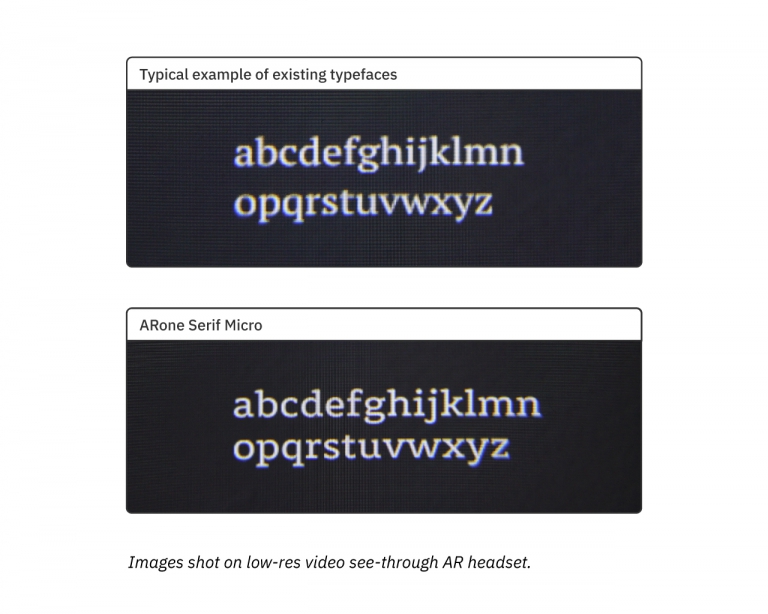About the Research
This research started as an exploration to create better typefaces for Augmented Reality (AR) headsets. However, it has been expanded to explore the best reading experience and future interfaces in AR headsets.
The need arose due to the inadequate guidelines for spatial interaction and limited coverage of current design principles. The spatial aspect of AR is going to change how we interact with type and our interfaces. There are several new variables that have emerged in AR interfaces which require a deeper look to form new guidelines and best practices. Below are some articles that will help you understand the challenges and my findings from the research. Since this an independent research with a lot of investment, I would really appreciate if you can support it.
Typeface Design
ARone is a multi-script type family designed for augmented reality headsets. It’s low contrast, generous spacing and robust shapes make it work well in busy backgrounds with high readability. The design of letterforms is based on research and thorough testing on various devices ranging from high-end headsets to low-resolution smartphone-based devices. It has optical weights for high and low-resolution duplexed to avoid text reflow, making it easy to deliver a seamless user experience across platforms/devices. The functionality of the text has been tested thoroughly to make the reading experience better even in longer texts.
The ARone family utilises Dwiggins’ m-formula to render virtual shapes which compensate for various distortions and technical limitations faced in AR text. The letterforms are designed for high legibility and they have distinct shapes to avoid any confusion between commonly mis-recognised letters. The spacing and width of letters are optimised for negative polarity (light text on dark background) and angular distortion. All the shapes are anti-interference (thin outline around letters) technique compatible, which is recommended by researchers for better readability.



